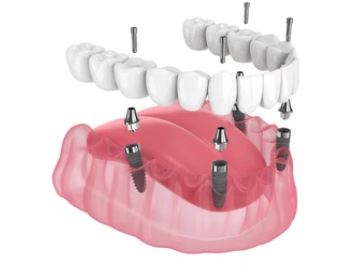Placing Dental Implants Years After Extraction

Dental implants are a terrific approach to improve the appearance of your jaw while also adding functionality to daily jaw movements. It appears simplest to conceive of these implants as dental roots that are not natural. They usually resemble screws and embed themselves in the jawbone.
As time goes on, the implant and the jawbone fuse to provide a solid foundation on which to build a unique crown. In essence, an artificial tooth is being attached to the screw that was inserted into your jawbone.
One of the best options for contemporary dentistry to help restore missing teeth is dental implants. An expert dental implant surgeon places these new teeth. You'll have three parts in your mouth at different points during the procedure.
The dental implant, which is the screw that is inserted into the jaw, is the first. The second component is the abutment, a tinier connecting screw used to fasten the dental implant and the crown together. The crown or artificial tooth that is attached to the abutment is the last element.
Now that you are completely aware of what dental implants are and how they operate, we can talk about the ideal patient for this operation. Anybody who has had a tooth pulled or is missing a tooth may be an excellent candidate for dental implant surgery. We must analyze what happens following tooth extraction in order to comprehend why certain people will be more fit for this sort of oral surgery than others.
When a dentist extracts a tooth, the entire tooth is taken out of the gum. There is still jaw bone present beneath the tooth. The density of the bone will gradually begin to decline. It will be more difficult for the dental implant to cling to the bone the less thick the bone is. This implies that if the bone density in that area of your jawbone is particularly poor, the dental implant may not be able to stay there.
So, it isn't really relevant how long it has been since you had a tooth pulled. Instead, it pertains to how much bone density you have in that particular jaw region. The density of your existing bone can be assessed by speaking with your dentist.
You always have choices accessible if your bone density is relatively poor. To increase the bone density in poor places, for instance, a bone transplant might be performed. Your dentist can offer you a better understanding of what is required for your dental implants to be effectively implanted if you discuss these specific processes with them.
There are several advantages to having dental implants inserted when considering having surgery. The aesthetic appearance is first. This is the major factor behind the widespread use of dental implants. People dislike how their grin appears when a tooth is missing. Crowns attached by dental implants might assist to make your teeth seem better. Some significant advantages include better self-esteem, simpler chewing, more comfort, and better pronunciation.
This article is for informational and advisory purposes. The recommendations of your surgeon who will examine you and perform the surgery should be a priority.
We wish you healthy days.
